

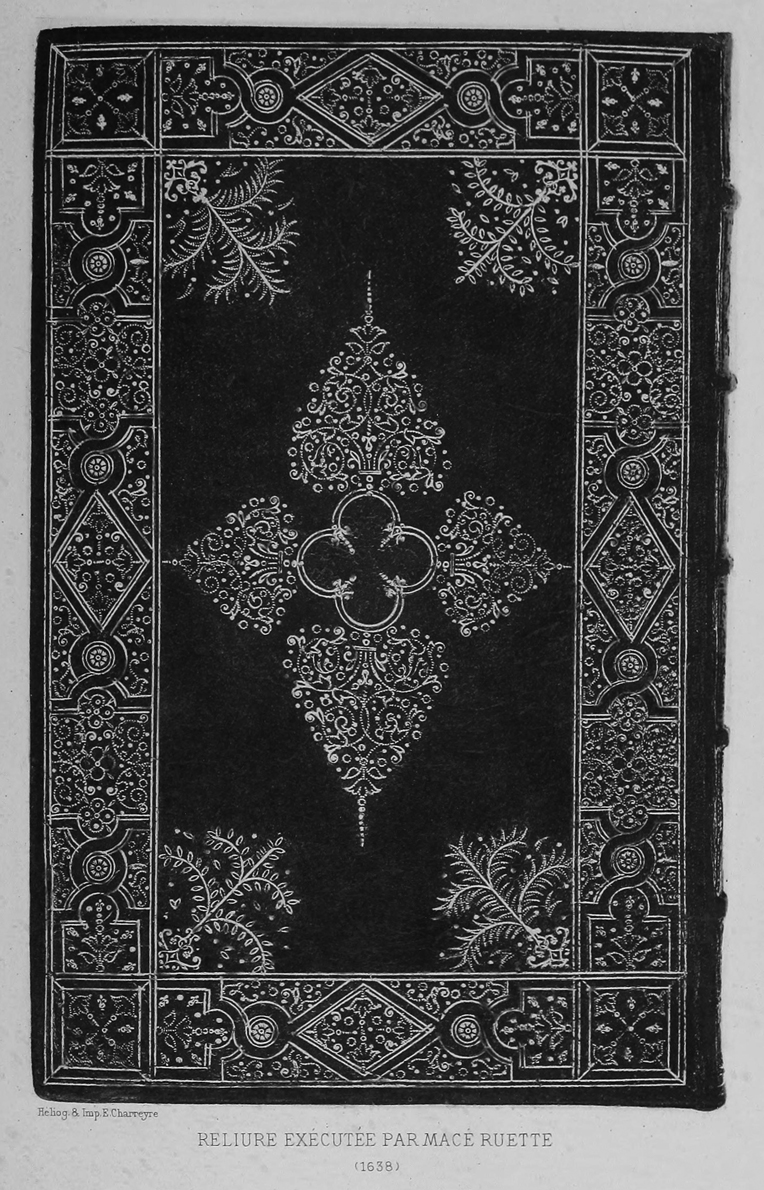
|
The binding reproduced above (click on the image to see an enlargement) is from Gruel's 1905 Paris publication Manuel de l'Amateur de Reliures, II, P. 160, Gruel's reproduction is a high quality heliograph by E. Charreyre. The first version of this page was made in 2010 (click here to see it) and now I want to add some new details to it, on that page I said that the reproduction was printed up side down, here I show it as it is in Gruel's book that you can see online at archive.org I am looking at this again partially because of the amazing quality of this reproduction. Now having just scanned my small 1625 binding at 1200dpi, in comparrison, I realize how impressive these printed heliogravure images are, matching in many ways my high resolution scans. |
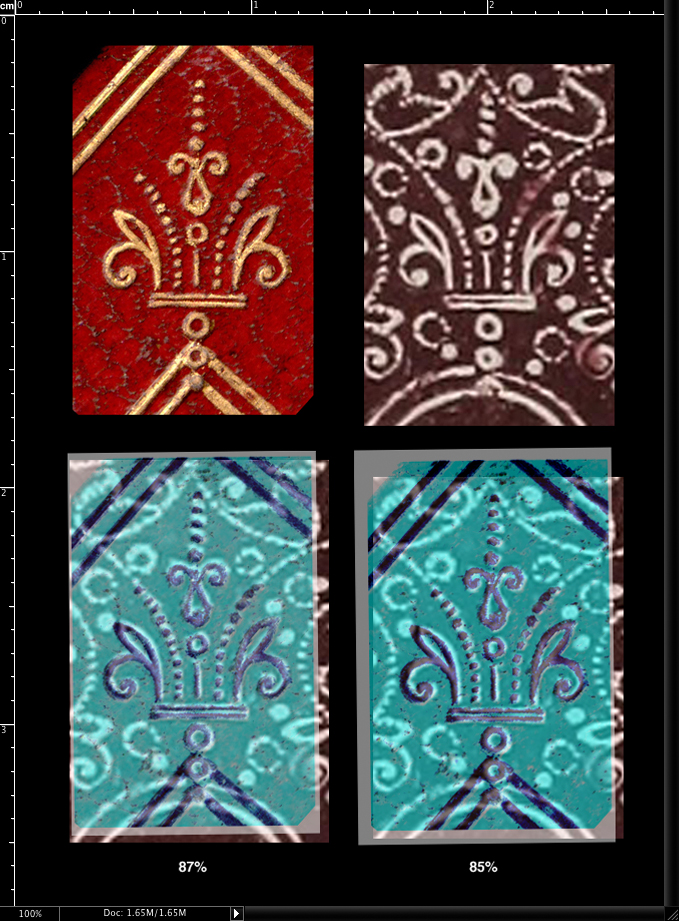
| In Comparative Diagram 1, we are attempting to incrementally resize a heliogravure imprint to match our 1200dpi scan from the 1625 binding. Here we are doing two things, first proving that the two imprints match and second being able to resize the entire heliogravure plate to be an accurate 600dpi x 100 percent scale. This will allow us to extract imprints at their correct size. I could have perhaps, gone another route to get Gruel's reproduction to the right size. I would need to find an online copy of this 1638 Chez Mace Ruette printing where the measurements are provided. Sometimes you can find this at the worldcat.org site however in this case, I have just now spent hours looking elsewhere because worldcat does not have this particular edition in their catalogues which is unusual. A 1644 copy is easy to find. |
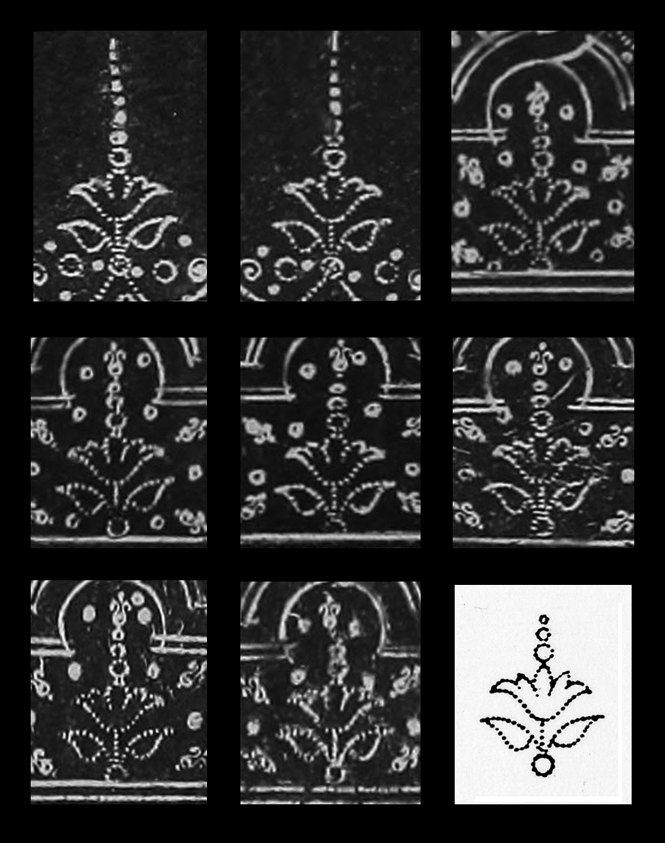
| In Comparative Diagram 2, you can see that a perfect, representative example of mr-3 is hard or impossible to find, this means that I will have to create one with cut and past methods. |
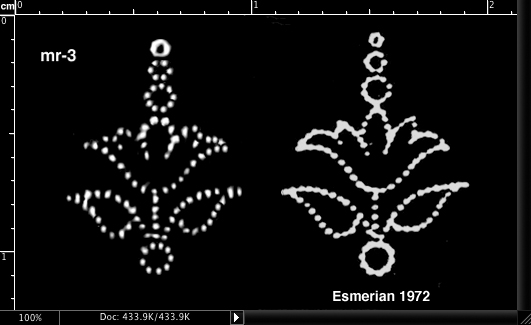
| In Comparative Diagram 3, I have attempted to create a mr-3 model and in doing this we see why Esmerian's illustrated models were a solution to this problem, because in the end you are forced to recreate dots to fill in the blanks, so to speak. My model then is not a perfect representation it is part bead model, part actual imprint. However it is very accurate in terms of over all size which is where Esmerian's published illustrations are not. I have reduce his illustrations generally to 95 percent of the original, which may be simply due to printing i.e. the page was not printed at the same scale as Esmerian's original illustrations. Even so things do not match up perfectly with Esmerians models, the number of beads (or dots) does not equate to what is found in the original imprint. If I understand the inspiration behind these tools correctly, the original outlines of the tool were cut with a small knife or chisel into roughly uniform small segments that then appear in the imprint as dotted lines, giving rise to another form of decoration sometimes referred to as pointillé. There is an older form of pointillé, which is the employment of hundreds of small dots to fill an area. The invention of pointillé tools and resultant pointillé decoration which exploded in popularity in the second quarter of the 17th century, is often attributed to Macé Ruette. Thus it is very interesting and important to explore his early work in this regard. |
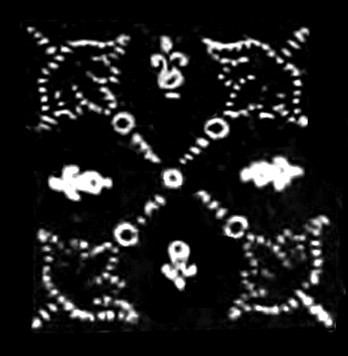
| In Comparative Diagram 4, we see a decorative arrangement of mr-2 wherein you will notice that it is difficult to find a perfect representative model of this imprint. |
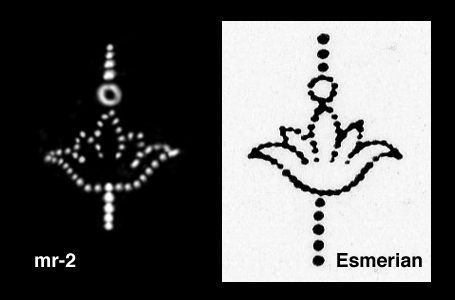
| In Comparative Diagram 5, I have created a mr-2 model, it is not the actual imprint. We see however that it differs significantly from Esmerians model of this imprint. Mine is more exact in terms of over all size and the number of beads in the outlines, although certain beads may be my own virtual inventions for lack of a complete imprint example. |
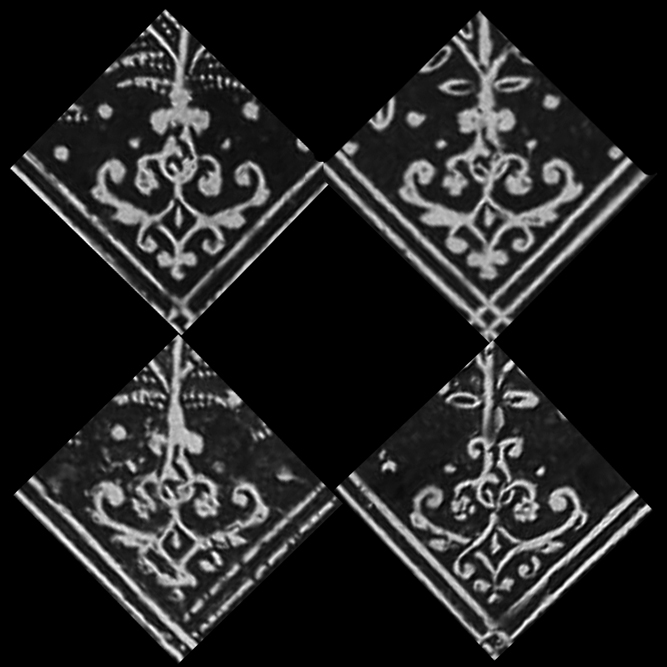
| In Comparative Diagram 6, we see four examples of mr-24, each one is missing some important detail, making it difficult to reconstruct. |
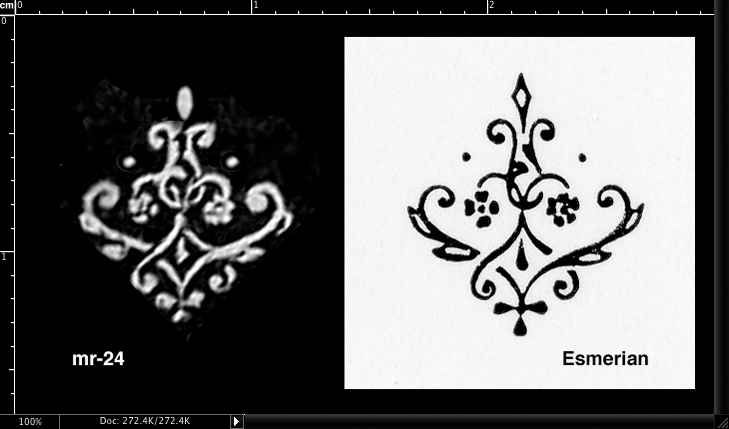
|
In Comparative Diagram 7, I have made a fairly accurate reconstruction with only the crowning top that is a reconstructed invention. We see in Esmerian's illustration details that might actually be missing from these 1638 impints, that may be in fact, due to the tool aging somewhat. We can imagine from the Esmerian model how this imprint might actually be meant to appear if it were fresh and new, thus Esmerian's models are still useful even though not exact copies. I have included a scale here because my model will be accurate as far as width is concerned. For the moment I do not know if there is a hollow in the crown as Esmerian has shown it, however if I see one in the future, I can correct it! This is the beauty of the internet, things are not set in stone as they are in books, here we can update and change things if need be.
On the next page we will use high resolution scans of actual Ruette imprints in the same exercise to create imprint models. Why is this important, you might ask? If you ever get chance to buy one of these bindings, the first thing you will want to know is whether or not it is a real Macé Ruette. These pages will help you to identify a real Ruette, furthmore if you are an auction expert and you need to know exactly what is being sold, these pages might save you a lot of grief that could result from an incorrect attribution. |
|
click here to see an Inventory Index of Macé and Antoine Ruette bindings click here to return to the HOME page. click here to see an INDEX of the 2017 pages. see below links to previous work |
| Even experts are sometimes wrong, before you spend thousands on a book, please do your own research! Just because I say a certain binding can be attributed to le Maitre isn't any kind of guarantee, don't take my word for it, go a step further and get your own proof. In these pages I have provided you with a way of doing just that. |
| Virtual Bookings, created by L. A. Miller | return to the Home page of VIRTUAL BOOKBINDINGS |